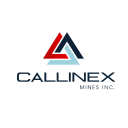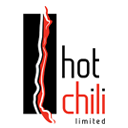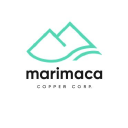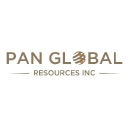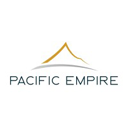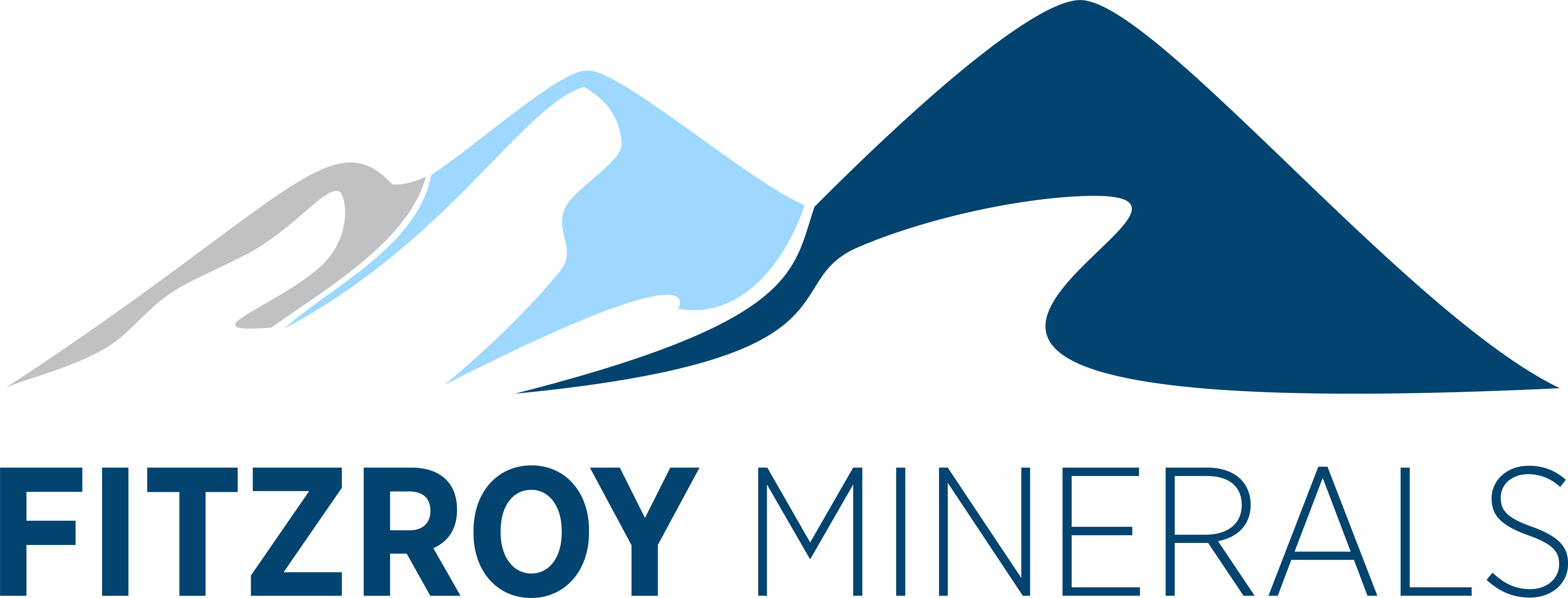Record Copper Price Reflects Commodity Structural Deficit

Record copper prices reflect a 4.5M ton deficit as electrification drives demand. Companies in Chile, Canada and Spain racing to develop new supply.
- Copper prices have reached record highs of $5.38 per pound, reflecting a substantial global deficit of 4.5 million tons and structural supply-demand imbalances driving the market.
- Treatment and refining charges (TC/RCs) have plummeted to historic lows, with some reaching negative territory for the first time since record-keeping began in 2013, creating intense competition among refiners.
- Companies in diverse jurisdictions including Chile, Canada, Spain, and Kazakhstan are advancing copper projects to meet growing demand from electrification, renewable energy, and the broader energy transition.
- Operational efficiency and cost control have become crucial for producers in the current high-price but challenging input cost environment, with successful companies demonstrating strong EBITDA margins.
- The long-term investment thesis for copper remains robust due to structural supply deficits, accelerating demand from electrification, and the strategic value of tier-1 assets in favorable jurisdictions.
Copper stands at a pivotal moment in its market cycle established as the metal of electrification. Recent price movements have seen the red metal reach record highs of $5.38 per pound, reflecting fundamental supply-demand imbalances that appear structural rather than transitory. With global copper demand projected to significantly increase due to worldwide electrification initiatives, renewable energy expansion, and the broader energy transition, copper has emerged as a critical component in the path toward a greener economy.
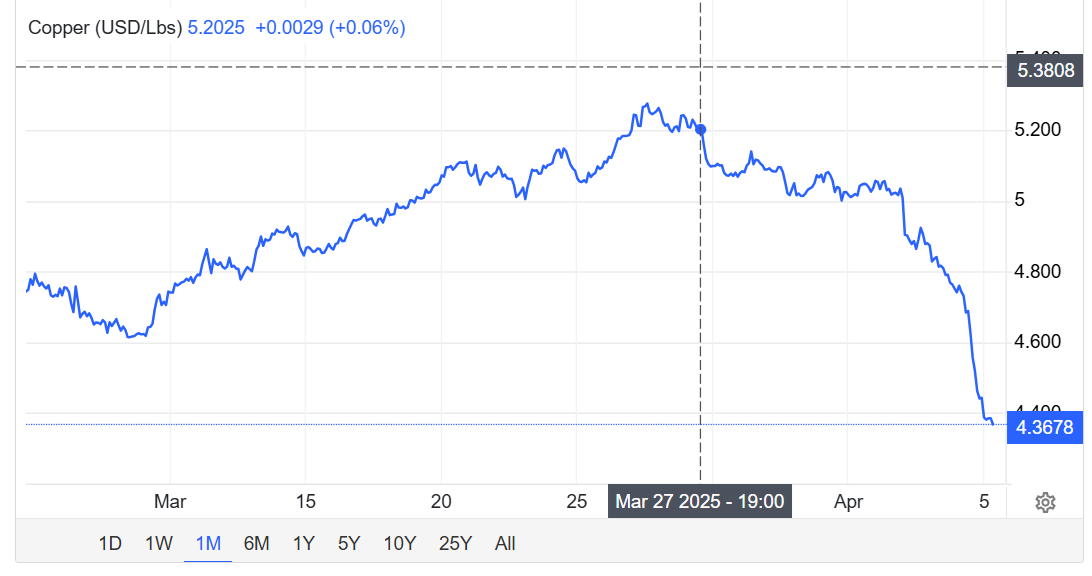
The global copper market is currently characterized by a substantial 4.5 million ton deficit. This shortage has dramatically impacted the industry dynamics, causing treatment and refining charges (TC/RCs) to plummet, in some cases to zero, creating intense competition among refiners seeking to secure feed for their facilities.
Concentrate Market Under Pressure
The copper concentrate market faces significant challenges heading into 2025, with Fastmarkets analysts forecasting an annual average spot treatment charge (TC) for copper of $10.7 per tonne for 2025, approaching $20 per tonne on a monthly average basis by year's end. These projections indicate persistent tightness in copper raw material supply.
In 2024, the market witnessed unprecedented events when Fastmarkets' calculation of its weekly copper concentrate TC/RC index fell into negative territory in April for the first time since record-keeping began in 2013. This dramatic decline reflects the extreme pressure on smelters and highlights the evolving dynamics of the copper supply chain.
"The market is getting more and more extreme, with annual TC/RCs rates clearly set to be below costs for all smelters in the world next year, which will likely prompt them to make money from other sources like high sulfuric acid prices and decent profits from gold, silver and other metals."[1]
Secondary Materials Gaining Importance
The supply constraints in copper concentrates have driven Chinese copper smelters to increasingly rely on alternative inputs such as blister copper, anodes, and copper scrap. According to industry sources,
"In recent years, more and more people have become interested in using more copper scrap in Asian countries — not only China, but Japan and South Korea, among others. This has intensified market competition, [and] its costs are rising accordingly."[2]
China's imports of copper scrap reached 2.03 million tonnes from January to November 2024, a 13.7% increase from 1.79 million tonnes in the corresponding period a year earlier. However, concerns about potential U.S.-China trade tensions following Donald Trump's presidential inauguration in January 2025 have created uncertainty in the scrap market, with some Chinese buyers avoiding U.S.-origin material despite China's recent loosening of import restrictions.
"The looming policy risk is keeping some buyers away from importing US-origin copper scrap, because no one knows what will happen with Trump, and we prefer to wait for a clear signal."[2]
Building the Future Supply
Strategic Positioning in Chile
Chile continues to be a premier jurisdiction for copper development. Posterchild development company, Marimaca Copper is advancing a significant project in the country's mineral rich regions. Marimaca's flagship project, the Marimaca Oxide Deposit (MOD), has established a substantial resource base of over 200,000 kilotonnes of measured and indicated resources at 0.45% copper for 899,709 tonnes of contained copper, plus 37,289 kilotonnes of inferred resources at 0.38% copper for an additional 141,252 tonnes. Their Australian CEO, Hayden Locke, continues to expand the scale of the project and has brought on an impressive set of strategic investor who clearly like th progression under his stewardship.
Locke notes, "This starts to get into the realms of the much bigger players in the industry and so it really is quite a game-changing discovery... when you start to think about the scale of the opportunity of a long-term copper cathode producing project."
The project benefits from its strategic location access to key infrastructure including power, water, and transportation networks.
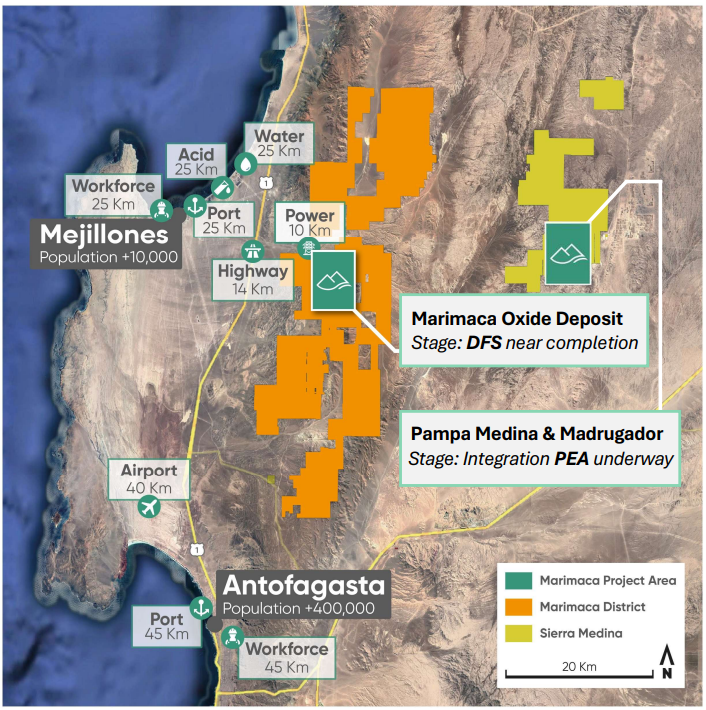
Amerigo Resources delivered exceptional operational results in 2024, producing 64.6 million pounds of copper (4% above guidance) at a cash cost of $1.89 per pound. The company achieved a record 65 million pounds of copper deliveries and plans to be debt-free by the end of 2025, reflecting strong financial discipline in a rising copper price environment. With 2025 copper production guidance of 62.9 million pounds, Amerigo continues to provide stable production amid the global copper deficit
"For the fifth year in a row, we are also providing increased annual copper production guidance. This year, we expect to continue achieving solid and consistent results, and we will continue to optimize our operations with fiscal responsibility."
The company's capital return strategy, which has already returned $78.1 million to shareholders since 2021, positions it as an attractive dividend-focused copper investment.
Similarly,Fitzroy Minerals is building up a quality portfolio of assets in South America, including Chile. Fitzroy Minerals, led by CEO Merlin, is a junior exploration company building a portfolio of high-potential copper and gold assets primarily in Chile, with an additional early-stage gold project in Argentina. Their flagship acquisition target is a copper discovery near the billion-dollar Candelaria mine, where they've already intercepted significant copper mineralization including 135m at 0.7% copper from surface and 38m at over 3% copper. The company has recently raised C$1.7 million and is working to close an acquisition that could position them for drilling copper targets by Q4 2024.
What sets Fitzroy apart is their strategy of pursuing "derisked" exploration assets with meaningful existing data points. Their Chilean copper project features an existing open pit that previously produced 2% copper ore, with 4,000m of drilling across 15 holes already completed. Meanwhile, their Polyat epithermal gold-copper project sits on strike from a million-ounce deposit and features historical workings with samples grading 9g/t gold, 2% copper, and 17g/t silver. The company aims to begin drilling the high-grade gold-copper system at Polyat in Q1 2025 while advancing their copper assets with both oxide resource definition and targeting deeper sulfide potential.
The CEO, Merlin Marr-Johnson, says of their business plan, "...what we're doing is building a portfolio of assets that people can say 'it's a team that's got some real chance of exploration success' and that's how you generate Alpha in these in these Junior companies... through the drill bit."
Similarly, Hot Chili Limited is developing the Costa Fuego copper project in Chile, which according to their prefeasibility study shows an after-tax NPV of $1.2 billion using an 8% discount rate and long-term copper pricing of $4.30 per pound. The project is designed to produce approximately 95,000 tonnes of copper and 50,000 ounces of gold annually over a 20-year mine life. A $1.3 billion capital requirement for Costa Fuego was a challenge for the company, but Managing Director & CEO Christian Easterday emphasized that the company has several financing options and has one of the lowest capital intensity projects in the pipeline.
As the global copper market is experiencing significant tightening, Hot Chili is confident with the positioning of the advancement of the Chile's copper projects.
"One of the largest clusters of undeveloped copper projects in the world in one location, probably going to be responsible for the next Escondida scale supply edition over the coming decade [...] Rising copper price and rising competition for these assets gives you that free kick."
Christian Easterday, MD & CEO of Hot Chili
Partnership Opportunities in Diverse Jurisdictions
While Chile remains a dominant player in copper production, projects in more areas are also gaining attention:
Spain
Pan Global Resources has reported high-grade copper results from underground channel sampling at the Profunda target in its wholly-owned Cármenes Project in northern Spain, with samples averaging 3.62% copper. One of the promising aspects of the company's latest exploration results is the identification of a substantial 500m x 150m soil copper anomaly from initial wide-spaced portable-XRF soil sampling which extends well beyond the historical mine workings, suggesting significant potential for additional mineralization discovery.
Spain's favorable investment environment for mining, with well-established permitting processes, excellent infrastructure, and mining expertise, enhances the potential value of copper assets in the region. Additionally, the European Commission has designated copper as a Strategic Raw Material, recognizing its importance for the continent's industrial future and energy transition goals.
Canada
In Canada, Callinex Mines is advancing its high-grade Rainbow copper deposit in Manitoba's Flin Flon mining district, positioning itself as the only junior with a 43-101 copper resource in this established jurisdiction. The company has submitted an advanced exploration permit that would enable a 10,000-ton bulk sample and potentially transition to production. With nearly 6 million tons of high-grade copper mineralization and a tight capital structure, Callinex represents a compelling investment in a market hungry for quality copper assets,
"Being in Canada, being in a safe jurisdiction, being in close proximity to this infrastructure and being in a position to be able to fast track that as our leaders within Canada look to explorers like Callinex to transition and be the next producers puts us in an ideal place."
Max Porter, CEO of Callinex Mines
Pacific Empire Minerals is advancing its flagship Trident copper-gold property in British Columbia, with plans for an initial 3-5 hole diamond drilling program targeting an area north of historical drilling. The Trident project has historical drilling showing intercepts of up to 2.73% copper. The company has submitted a multi-year exploration permit application, anticipating approval in Spring 2025. The strategic location, between NorthWest Copper's Kwanika Deposit and Centerra Gold's Mt. Milligan Mine, gives Pacific Empire a foothold in a proven copper-gold district.
Asia
The competitive environment for high-quality copper assets also creates favorable conditions for strategic partnerships and merger and acquisition (M&A) activity. With operations in Kazakhstan and North Macedonia, Central Asia Metals has developed significant expertise in these regions. Central Asia Metals has been actively seeking acquisition opportunities, citing major mining companies that have invested in Kazakhstan, including Rio Tinto, FMG, First Quantum, Anglo American, and Teck Resources. Central Asia Metals' CEO Gavin Ferrar strongly defended Kazakhstan as an investment destination:
"Kazakhstan has always been a good jurisdiction. Yes, the perception might not be there, but you don't have to scratch very hard - it's an investment-grade country. You've got a lot of Western capital going in there, particularly in the oil and gas industry."
Gavin Farr, CEO of Central Asia Metals
Cost Control and Efficiency
In a high-price but challenging input cost environment, operational efficiency and cost control have become crucial for copper producers. Central Asia Metals, a base metals producer with operations in North Macedonia and in Kazakhstan, has demonstrated strong performance with a 47% EBITDA margin in 2024. Ferrar emphasized their operational philosophy:
"The whole culture is really around, we can control what we control. One of the key things we can control as a business is our costs. We're price takers as commodity producers, what we can do as a business, and what the board expects us to do frankly, is to run this thing so that we can be profitable through the cycle."
Risk Factors and Challenges
Despite the positive outlook, investors should be aware of several risk factors. These include potential geopolitical tensions affecting trade flows, particularly between the U.S. and China; challenges in securing financing for large capital projects; and operational risks related to water access, energy costs, and permitting timelines.
Market participants have mentioned increasingly higher trading risks stemming from extreme market conditions, including cash liquidity risks and counterparty risks. As one copper concentrate trader noted,
"We've already conducted strict reviews of our buyers this year since the freefall in spot TC/RCs, to avoid any potential risks. Next year, the review will be stricter, to assess if they have issues of fulfilling contracts and other risks, like cash liquidity."[2]
The Investment Thesis for Copper
- Structural Supply Deficit: Current 4.5 million ton global deficit with limited new projects in development pipeline; record-low treatment charges signal extreme tightness in concentrate markets that may persist through 2025-2026.
- Demand Growth Accelerators: Electrification trends, renewable energy expansion, electric vehicle growth, and grid infrastructure upgrades all require significant copper inputs; demand growth expected to outpace supply additions.
- Strategic Value of Tier-1 Assets: Companies with large-scale, advanced copper projects in favorable jurisdictions (Chile, Peru, Spain) carry scarcity premium; consider development companies with clear pathways to production.
- ESG-Compliant Copper Premium: Projects with lower carbon intensity, responsible water usage, and strong community relationships will command premium valuations; look for innovations in processing technology and water management.
- Diversified Exposure Strategy: Balance portfolio with established producers generating current cash flow (Central Asia Metals), developers nearing production decisions (Marimaca, Hot Chili), and focused explorers with discovery potential (Pan Global).
- Alternative Inputs Play: Consider exposure to copper recycling and scrap processing as secondary material demand increases; companies with technological advantages in processing complex or lower-grade materials.
- Water Solution Innovators: Projects with secured water rights or innovative water solutions in arid regions (particularly Chile's Atacama) have strategic advantage; water infrastructure may become standalone business opportunity.
Conclusion
The copper market stands at a critical juncture with record prices reflecting genuine supply constraints against a backdrop of accelerating demand. For investors, this creates a compelling opportunity across the value chain, from exploration companies making new discoveries to developers advancing projects toward production and established producers optimizing operations.
The fundamental drivers supporting copper prices appear structural rather than cyclical, with electrification trends and the energy transition requiring substantial copper inputs. Meanwhile, underinvestment in new supply, declining grades at existing operations, and increasing ESG requirements create barriers to rapid supply growth.
Companies with assets in strategic locations, secured access to critical inputs like water, and strong ESG credentials are particularly well-positioned. While market volatility should be expected, the long-term outlook for copper remains robust, making it a key component of forward-looking investment portfolios focused on the materials essential to the green energy transition.
References:
- Zhang, Sally (January 2025). Fastmarkets Bumpy Road Ahead for Copper Concentrates Market in 2025
- Fastmarkets team, Zhang, S., Chew, C. (January 2025). Supply Concerns, Challenges Ahead for Secondary Copper, Blister Into China
Analyst's Notes




Subscribe to Our Channel
Stay Informed










